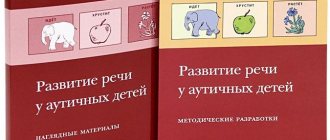auditory dictations in speech therapy for grades 1-7
Starlings (S-C)
It was mid-March. Spring this year turned out to be smooth and friendly. Occasionally there were heavy but short rains.
We were looking forward to the starlings flying into our garden. Starlings are cute, cheerful, sociable birds, the first migratory guests, joyful heralds of spring. (40 words)
Spring (C-C)
So winter has come to an end. Somehow everything changed immediately. The wind drove in low clouds. They covered the entire sky, and suddenly the first rain fell on the ground. And then the clouds parted, the sun appeared and warmed the earth.
Tits were the first to mark the beginning of spring. They quickly flew from branch to branch, looking for bugs and worms in the folds of the bark. (52 words)
Birds (C—C)
In one village there were many gardens. Birds sang loudly in them. In autumn there were a lot of apples in the orchards.
But one day, mischievous boys destroyed the birds’ nests. And the birds flew away.
Spring came. The garden was quiet without birds. Harmful worms have spread and eaten the flowers and leaves. In the fall there were no apples in the orchards. (52 words)
Resourcefulness (C-C)
One day a shepherd was tending a large flock of sheep in the mountains. A collapse occurred and blocked the path of the sheep. Then the shepherd tied a note to the dog's collar and sent the shepherd home. People saw the dog, read the note and rushed to help. The sheep were saved.
It is rightly said that a dog is man's friend. (44 words)
Evil stepmother (C—C)
It was winter. It was January. There was a lot of snow. The trees in the forest stood waist-deep in snowdrifts. People sat in their houses and lit the stoves.
At such a time, in the evening, the evil stepmother ordered her stepdaughter to go into the forest for snowdrops. The girl began to cry, wrapped herself in a torn scarf and went into the forest. (49 words)
Insects (C—C)
Flies, beetles, dragonflies and butterflies are insects. A butterfly lays eggs. A caterpillar emerges from the egg. The caterpillar will turn into a chrysalis, and the chrysalis will turn into a butterfly.
Butterflies are beautiful, but their caterpillars are harmful. Caterpillars eat leaves and buds on trees. (35 words)
New town Chulak (C-C)
All around lay the waterless steppe. Wells with bitter water were rarely found in it. Even sheep don’t drink this kind of water.
But then builders came to this region. They extracted clear, tasty water from the depths of the earth and began to build houses. A lot of work began in Chulak. Now the streets in the city are straight and wide. And along the banks of the rivers there is the green noise of trees. (56 words)
In spring in the grove (CH—SH)
It was a warm sunny day. The kids went to the birch grove. The girls are looking for lilies of the valley and sorrel. The boys found a hedgehog in the bushes. The guys wandered in the forest for a long time. They returned home late in the evening. (32 words)
Summer morning (Whistling - hissing)
A wonderful morning has arrived. A warm spring breeze was blowing. A clear, fast stream gurgled in the ravine. Swallows were chasing insects. The ringing song of a lark was heard. The bright sun was rising across the sky. (28 words)
1.2. Studying the writing skills of students in grades 1-4
The technique is intended to identify specific writing disorders - dysgraphia - in primary schoolchildren. The study of writing skills acquired in the process of targeted schooling is carried out using materials specially selected for this procedure, in which the number of polysyllabic words and their length, the number of consonants and vowels in words increases every year. The proportion of low-frequency words, their structural complexity, and the number of clusters found in words are increasing.
The specificity of this technique is that the same test tasks are offered to children to complete twice. Students complete them both at the end of the school year and at the beginning of the next year, when moving to the next grade (for example, at the end of the first grade and at the beginning of the second; the material used for examination at the end of the second grade is given to the children again at the beginning of the third etc.). Comparison of two identical works performed at different times makes it possible to identify in some children fatigue that occurs towards the end of the school year, while in others the collapse of writing stereotypes formed during the learning process is detected at the beginning of the new school year after rest during the holidays, which should be considered one from obvious signs of a specific disorder. In one case we observe a greater number of errors at the end of the school year, and in the other at the beginning of a new school year. The information obtained turns out to be very valuable for designing correctional work programs.
If more than 4 dysgraphic errors are detected in a student’s written work for a long time, then he is classified as having a writing disorder—dysgraphia.
All written test materials are recommended for use by the Ministry of Education and Science of the Russian Federation.
Control texts
1st grade (end of training)
Dictation
Storm
It's a warm summer day. A large cloud is floating across the sky. Then a strong thunder struck. The first drops fell to the ground. It began to rain. Where to run? Vasya and Yulia took cover under a canopy.
30 words, 82 consonants, 59 vowels, 5 soft signs, 13 word clusters.
Copying ( from printed text)
Hedgehog
Warm rays awakened the forest. A shadow fell from the old spruce. A skinny hedgehog got out. He began to look for food.
18 words, 47 consonants, 37 vowels, 2 soft signs, 7 word clusters.
Copying (from handwritten text)
Crane
A crane lived in a swamp. He built a hut. The crane became bored of living alone. He invited the heron to visit.
19 words, 57 consonants, 39 vowels, 2 soft signs, 14 word clusters.
2nd grade (end of training)
Dictation
Water lilies
Wonderful water lilies bloomed on a distant forest lake. Their stem was raised high above the water. On the stem was a large round flower. He was very beautiful against the background of dark water. Like a golden ball next to large green plates of leaves. Tall pines admired the beautiful flowers. It’s like golden ships sailing on the smooth water of a lake.
54 words, 173 consonants, 121 vowels, 6 soft signs, 30 word clusters.
Copying (from printed text)
Bird cherry blossoms
Under the rays of the May sun, everything is growing quickly. Light white snowdrops have bloomed. A colorful carpet of grass and leaves unfolded in the meadows. The bird cherry blossoms are full of buds. A pleasant aroma wafted from the tree. It was cold in the morning. The morning fog did not rise in a ring from the forest clearing. He froze and lay on the ground like frost. Silence in the forest.
53 words, 165 consonants, 121 vowels, 2 soft signs, 29 word clusters.
Copying (from handwritten text)
Frog
Once upon a time there lived a frog. She sat in the swamp and caught mosquitoes and midges. One day she was sitting on a branch, leaning out of the water. The frog enjoyed the warm, light rain. The rain drizzled down her lacquered back. Suddenly a thin sound rang out in the air. They were ducks. They went down into the swamp. The frog hid.
50 words, 151 consonants, 113 vowels, 4 soft signs, 29 word clusters.
3rd grade (end of training)
Dictation
Summer
The summer night is short. The first ray of sun began to play. The breeze blew. The leaves rustled. Life has awakened everywhere. Bees flew to the green meadow. Hairy bumblebees are buzzing and hurrying to the flowers.
Birds flock to the forest edge. Their joyful songs ring in the air. Forest animals come running to the clearing. Various sounds, rustles, voices are heard. So a squirrel in a red fur coat made a light jump and ended up on the top of a pine tree. The hedgehog ran into his home. The diligent sparrows are busy.
68 words, 227 consonants, 157 vowels, 6 soft signs, 47 word clusters.
Copying (from printed text)
Little mouse
The baby mouse is the smallest rodent in the forest. It weighs only a few grams. Her fur is brown, her eyes are black, her chest is white. The little mouse deftly climbs tall stems, leaves, and bushes. In the tall grass, the animal weaves a wonderful hut-nest from blades of grass. It is suspended on a stalk high above the ground. The mouse is not afraid of wind and frost. She insulated the nest inside with soft blades of grass. Soon there will be tiny mice there.
66 words, 218 consonants, 155 vowels, 6 soft signs, 47 word clusters.
Copying (from handwritten text)
Raccoon
The raccoon lives in a hollow tree, and at night it wanders through swamps, the banks of rivers and lakes. His fur is long and thick. On the tail, the coloring in rings is sometimes lighter, sometimes darker. The fur on the muzzle is black with white trim.
The raccoon will catch a frog, crayfish, mouse, lizard and first rinse them in water. For this they nicknamed him the raccoon. The raccoon also washes acorns, nuts, and berries. At the same time, he will wash his paws before eating.
(According to A. Tambiev)
70 words, 167 consonants, 145 vowels, 4 soft signs, 26 word clusters.
4th grade (end of education)
Dictation
Butterflies on the path
The bushes and grasses are bent by the water, and the sun has already dried the narrow path. You walk and only multi-colored pebbles ring under your feet. White, yellow, and blue butterflies flew out onto the warm path. Butterfly wings are polka dot, speckled, striped.
I walk and they flutter overhead. A living, colorful ribbon swirls like a wave and falls onto the path. And only four butterflies with bright wings fly up.
I go back after lunch. The grass has dried, the flowers have opened. And the butterflies away from the sun-warmed path.
82 words, 234 consonants, 183 vowels, 6 soft signs, 56 clusters.
Words for reference: up, back.
Copying (from printed text)
On the bank of the river I am greeted by a small Easter cake. The sand is streaked with his footprints. The tracks intersect and converge into paths. I follow the trail and see a nest near a bush. There are two eggs in the nest. Easter cakes are circling around me. One runs away from the nest and hurriedly sits down. The other accompanies me to the border of his property and becomes silent.
This morning I woke up from the cold. On the tent, on the grass, on the bird cherry tree - there is a white veil everywhere. Unexpected snow in May caused a lot of trouble. The birds flew away and abandoned their nests. The clutch of Easter cakes also died.
(According to Yu. Frolov)
79 words, 232 consonants, 179 vowels, 1 soft sign, 54 clusters.
Copying (from written text)
Birch
How wonderful it is to walk in a light birch grove. You will approach a birch tree, press your cheek to the birch bark and feel its warmth. She stands there, swaying in the wind, delighting with her beauty.
Life for a birch is not easy. And they strain the juice from it, and tie the branches into brooms, and tear up birch bark. On tueski.
The birch tree will grow old, collapse to the ground, and crush the forest grass. The wood will rot and turn into dust. A small seed will fall from above and germinate in the soft dust. Look, a birch tree is pulling palm-shaped leaves from an old stump.
(According to Yu. Frolov)
78 words, 231 consonants, 172 vowels, 7 soft signs, 46 clusters.
Letter from dictation – previous | next – Writing letters
Neuropsychological diagnostics, examination of writing and reading of primary schoolchildren
Consultation with a psychologist for neuropsychological problems
Five types of dysgraphia
What is dysgraphia? Doctors identify five forms of the disease with different symptoms.
- Articular-acoustic. Incorrect pronunciation of sounds affects the spelling of words. The child writes as he hears. The speech therapist prescribes correction of the pronunciation of sounds.
- Acoustic dysgraphia. The sounds are pronounced correctly, but are replaced when written with other letters. Paired voiced and voiceless consonants are mixed: P-B, T-D, F-V, Sh-Zh; whistling and hissing Z-Z, Sh-S, S-C. The sounds Ts-T, SCH-CH, CH-TH are confused. Difficulty arises in recording soft sounds: “lube”, “water”.
- Ungrammatical. General speech underdevelopment is diagnosed. In the notebook, words are written outside the rules of grammar: without changing according to declensions, without connection with each other, with erroneous endings. For example: “blue mitten”, “bright sun”. Agrammatic dysgraphia is diagnosed from the age of 9, because the disease manifests itself by this age.
- Optical dysgraphia is a disorder of spatial and visual perception. The student does not distinguish similar elements in letters. Therefore, when writing, extra sticks, circles, mirror images, and confusion of uppercase and lowercase characters appear. For example, the outline of letters that are similar in structure is mixed: capital Ts-Shch, R-L-Y, E-Z; lowercase p-t, v-d, l-m, i-sh.
- Motor dysgraphia. This form of dysgraphia is detected more often than others. The weakness of language synthesis and analysis is diagnosed. Symptoms of the motor form: the combined and separate writing of prepositions and prefixes is confused; endings are skipped. In words, letters and whole syllables are swapped and repeated. Words are not completed, unnecessary letters are added. A dysgraphic does not divide a word into syllables, or sentences into words.
Causes of the disease
In children
Causes of dysgraphia in children:
- Perinatal pathologies; heredity; illnesses and injuries in infancy
- Teaching foreign languages at an early age; bilingual or multilingual family
- Authoritarian parenting methods
- Limitation of speech communication in the family; “Lisping”, unclear pronunciation of words by adults
- TV abuse
- Neurological complications; disorder of attention, memory; dyslexia (reading disorder)
- Retraining a left-handed child
- Start of schooling at age 6
In adults
Dysgraphia in adults is caused by the following reasons:
- Traumatic brain injuries
- Strokes, brain tumors
- Meningitis
- Neurosurgical interventions
- Injuries sustained during childbirth
- Post-existing asphyxia
Dysgraphia
How to organize classes at home
How can parents prevent dysgraphic disorders in their children? Prevention of dysgraphia begins with pregnancy. The mother needs to take care of herself and the baby, avoid the risk of infections and injuries in the child’s early childhood. From infancy, children are emotionally dependent on their parents. It is necessary to avoid stress and create a warm atmosphere in the family.
The foundations for successful writing skills are laid in the preschool period. By learning poems and songs, the baby learns to hear sounds and relate sounds to letters. Visual perception is trained by games where colors and shapes are compared. Construction sets with large details, modeling, and appliqué develop spatial thinking and motor skills.
Drawing along the contour and filling out copybooks for preschoolers will prepare the child's hand for writing. The magnetic alphabet can be easily placed on the refrigerator at home. By sorting through the squares, the child remembers the external outlines of letter symbols, the sequence of letters, sounds in words.
If a speech therapist diagnoses a defect in the development of speech skills, you must not miss the moment and correct the violations. By developing oral speech, a junior student will easily master written speech.
Everything can be corrected
So, the child has dysgraphia. What to do? Parents need to understand that the disease can be successfully corrected. Errors in writing are a consequence of underdevelopment of oral speech, impaired spatial thinking, and motor skills. Scolding a dysgraphic person for mistakes is the wrong tactic. You cannot rewrite classwork and homework multiple times. An aversion to studying, reading, and writing is fostered.
If the doctor has made a diagnosis, there is no need to show anxiety and worry in front of the child. He will feel inferior, and this will affect the relationships in the children's team. It is better to direct parental attention to successes during speech therapy sessions.
Treatment of dysgraphia in schoolchildren is complicated by completing the school program. Parents tell the teacher that the student is undergoing treatment. Dictations and tests are checked jointly by the teacher and speech therapist. Marks in the Russian language are given taking into account the gradual correction of speech and writing skills.
Treatment details
Correction of children's dysgraphia is a joint work of a speech therapist, teacher, parents, and patient. Depending on the type of disease and form of manifestation, a complex of treatment is prescribed. Classes take place in a doctor's office, but you can also do the exercises at home. In some cases, the doctor, in parallel with speech therapy treatment, prescribes courses of physiotherapy, hydrotherapy, exercise therapy, and massage.
Correction of acoustic dysgraphia begins with the development of phonemic hearing. Primary schoolchildren perform written and game tasks: recognizing vowels and consonants by ear, practicing the pronunciation of soft sounds, searching for errors in words. To test the acquired knowledge, the speech therapist arranges dictations.
The goal of correcting optical dysgraphia is to train visual memory. Exercises develop the skill of drawing letters. Parents buy pens and pencils for their children with unsmooth, uneven bodies. Massaging the fingertips stimulates the functioning of the brain centers.
Treatment of dysgraphia in adults is carried out in the form of a complex of speech therapy techniques and sedative therapy. The doctor takes into account the form and cause of the disease. During treatment, the patient corrects pronunciation defects, develops coherent speech and auditory memory. Classes train analytical abilities and expand vocabulary. Writing exercises reinforce the skills of writing letters correctly. Additionally, the patient is prescribed massage, medications, physiotherapy, and a course of exercise therapy.
Home activities
The disease cannot be cured quickly; it takes months of practice to correct writing problems. Treatment of dysgraphia in schoolchildren is effective if practiced at home, in parallel with visiting a doctor. The child’s workplace is illuminated so that it is comfortable for the eyes. A positive attitude is important in classes. The child is motivated by praise for success. Speech therapists have compiled daily sets of exercises to treat dysgraphia at home.
Copybooks train writing skills. The elementary school student fills out the pages, trying to ensure that each letter occupies its own space. If you are not interested in writing in copybooks, buy a squared notebook. It is convenient to use a gel pen, which makes it easier for a child to notice differences in letter symbols.
Exercise “Proofreading” is carried out for 5 minutes. Parents take a book with content unfamiliar to the child, medium font size. Task: Underline the letters on the page. For example, first A, then O. After a few days, the consonants are emphasized. Next, you need to look for two letters: one is underlined, the second is circled. The exercise focuses on searching for given letter features.
The “Write Out Loud” exercise develops phonemic awareness. The child learns to write sounds using the correct letters. The method is simple: what is written is spoken out loud, letter by letter. Attention is paid to unclear sounds and endings of words. The exercise trains the sequence of writing alphabetic symbols and develops the habit of adding the final letters of words.
The “Missing Letters” exercise sharpens your attentiveness and confidence in writing. An adult prepares two texts. The first one skips letters, the second one contains the full text. The child needs to fill in the missing symbols, checking the hint text.
There are tasks with labyrinths in children's magazines and on educational websites. Maintaining a continuous line trains the motor skills of hand and forearm movements. The sheet with the labyrinth lies motionless on the table, only the hand with the pen moves.
Speech therapists recommend writing dictations for the correction of dysgraphia every day according to the following rules:
- Give a text of 150 words at least an hour
- First - reading aloud with joint analysis of spelling and pronunciation of rules
- The sentence is read aloud three to four times before recording.
- The child determines where commas are placed; explains the placement of signs
- The proposal is dictated in parts
- Each word is spoken and then written down.
- An adult does not correct mistakes with a red pen, but uses a pencil
What you need to know about making a diagnosis
Diagnosis of dysgraphia in children includes several stages. An accurate diagnosis is made after 8 years of age; by this age, a primary school student has mastered writing. The verdict is not made immediately. A step-by-step study is prescribed. First, school notebooks are reviewed and writing skills are analyzed. Then the child is examined:
- speech therapist;
- psychologist;
- neurologist;
- ENT;
- ophthalmologist
Poor vision and hearing provoke writing impairment, so consultation with an ophthalmologist or ENT specialist is needed. A neurologist examines the state of the nervous system. The speech therapist checks the level of speech development, speech motor skills, and the quality of articulation. The syllabic and grammatical structure of speech is analyzed. The doctor finds out which hand is the child’s dominant. After a detailed examination, the speech therapist determines the form of dysgraphia and prescribes treatment.
Dysgraphia in adults is diagnosed using similar methods. First, the speech therapist studies the patient’s written test tasks to eliminate ignorance of spelling rules. Then the pronunciation of sounds, vocabulary, and the ability to reproduce what was heard are examined.





